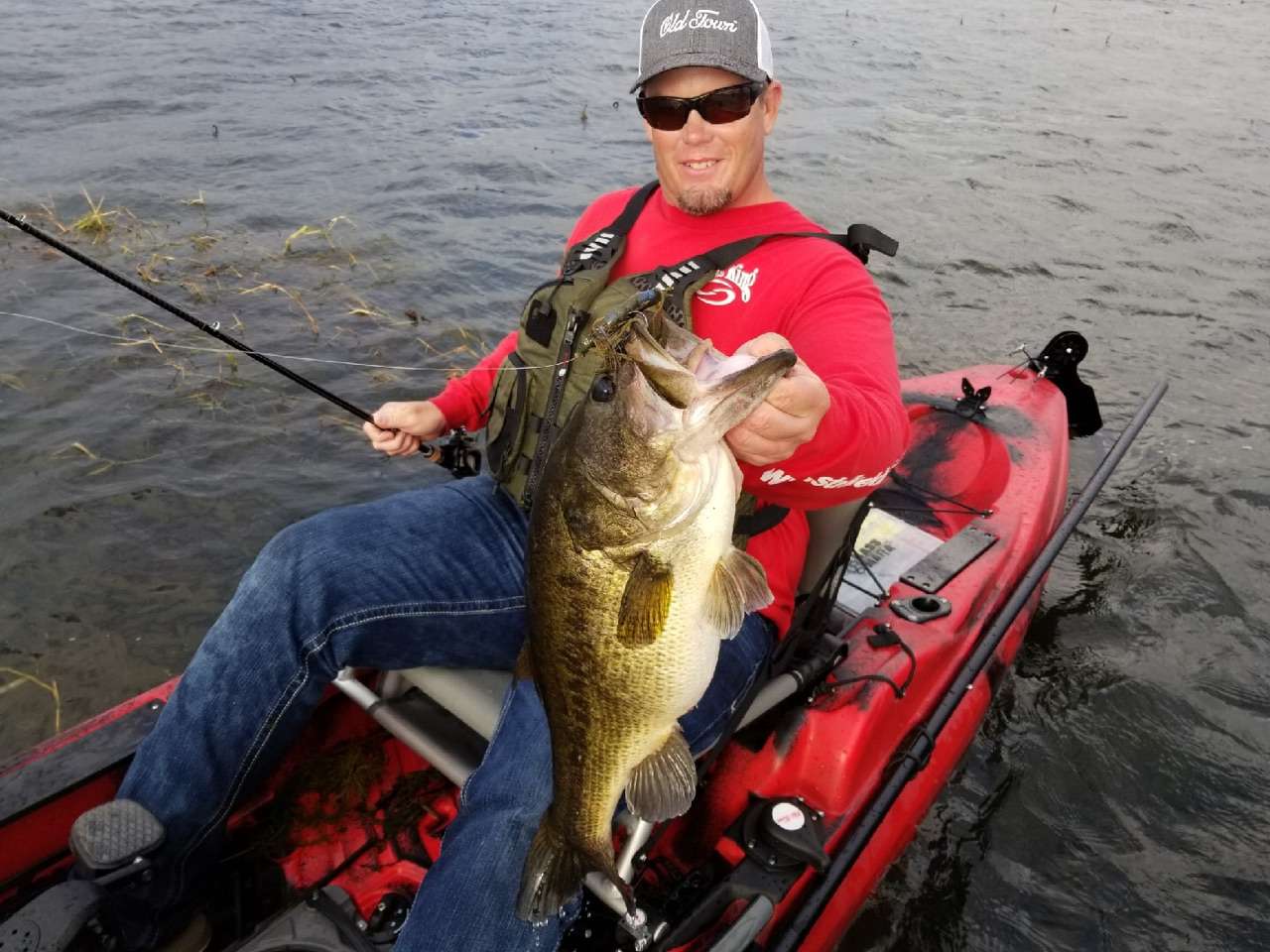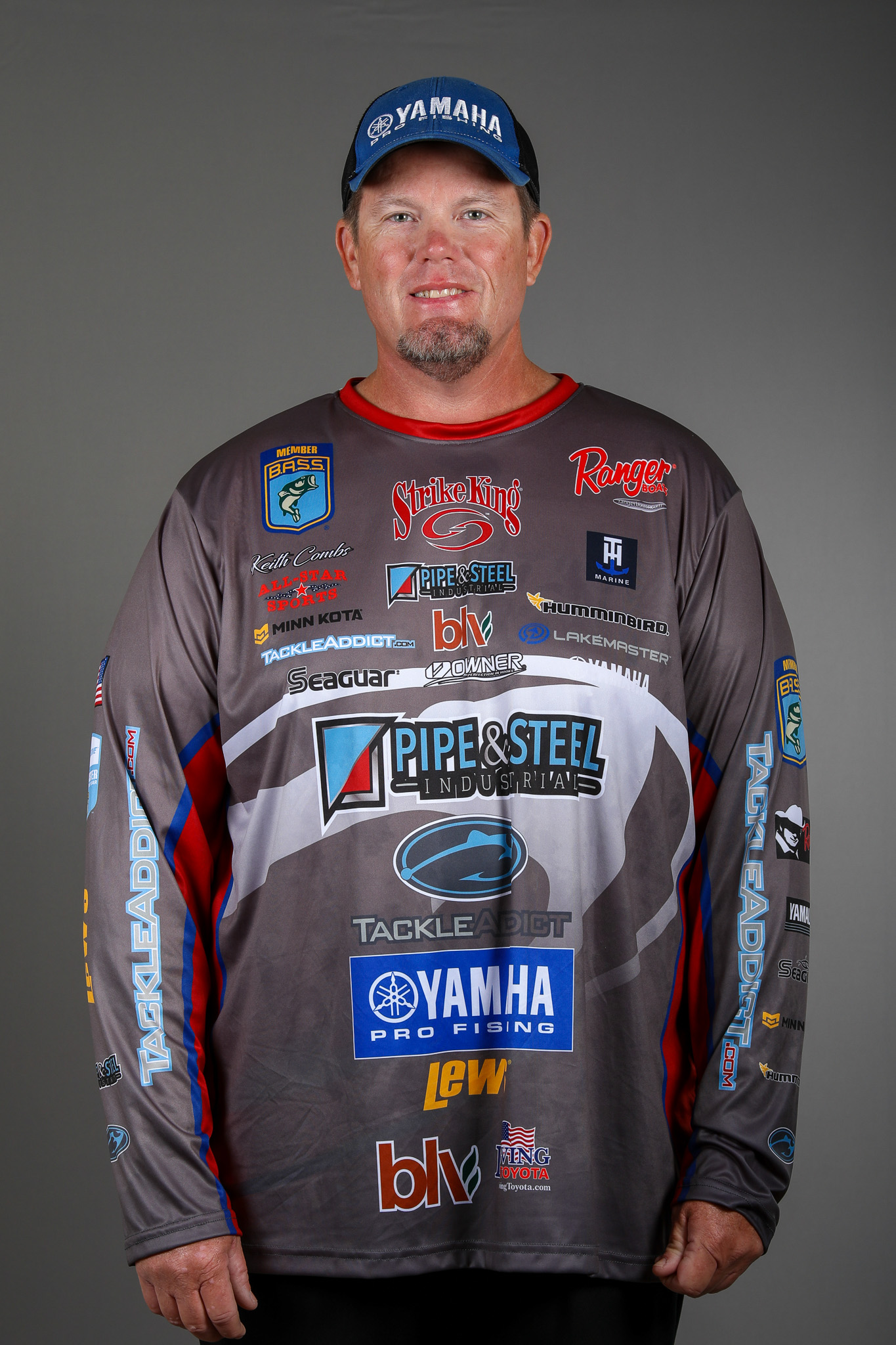
When Jennifer and I first got our Old Town Predator kayaks about a year ago, I figured they’d offer us a nice diversion, a chance to kick back and fish a little on some smaller bodies of water. What I didn’t realize at the time was how much they’d help my tournament fishing. I haven’t necessarily learned any new lessons from them, but what they’ve done is reinforce some basic truths that many advanced anglers tend to downplay or even ignore.
I can divide those realizations into five basic lessons:
The first is that you need to be stealthy any time that you’re on the water. That’s something every bass angler knows, but when we get in our big fiberglass boats and start banging lids you’d think it was totally foreign. From the very first day that I got into my kayak, and nearly every day on the water since then, I’ve caught multiple bass that literally bit at the rod tip, like 6 feet from the boat. That happens occasionally in a bass boat, but not nearly as often, and I’m convinced it’s because the bass boat has a much more obvious presence. The bass feel right at home around the kayak, so they’ll still commit even when they’re close. It has taught me that I need to make a greater effort to keep a low profile, shut off all of the sounds, and stay off of the trolling motor as much as possible when I’m out fishing tournaments.
The second lesson that I’ve relearned is how important it is to dissect what you have in front of you. When you’re in a bass boat, if you don’t feel that your current spot is “on” you can pick up and run 20 miles until you see something better. My Predator is fast for a kayak, but you’re not going to go 20 miles in it, so you have to fish what’s there. That translates to the Bassmaster Elite Series, where we often have to fish in a crowd and share water. You wait your turn to fish the key cover or structure, and if you learn to truly pick apart your targets it’ll add up to better finishes.
I’ve often said that the best way to get better as an angler when you’re learning to fish is to go someplace where you’ll get a lot of bites. In the kayak, there are lots of places I can go that others can’t, including small, non-tournament-friendly bodies of water. It’s often easier in those places to catch 50 or 100 fish than it is on the big lakes, and a kayak puts me in position to access and explore those places easily. I can experiment with tackle and presentations in the knowledge that the fish will help me dial them in.
The fourth lesson that has hit home is how important it can be to get away from others. As I indicated above, there are times you’ll have to fish in a crowd, but if it’s not necessary you should avoid it at all costs. Jennifer and I frequently fish a small public lake near our home that is loaded with standing timber. We can fish it out of the bass boat, but we’ll be limited to the main channel, a few creek channels and some roadbeds. In the kayak, there’s no place that we can’t go.
Finally, fishing out of a kayak forces you to be judicious about the tackle you bring. You can’t tote along 20 tackle boxes. I’ve always said that if you really want to learn a particular technique, that’s all you should bring in the boat. In your bass boat, it’s possible to keep it simple, but you’ll always have some more options. Fishing out of the kayak has often forced me to work with what I packed, and in turn that has helped me to refine my sense of patience.
As I stated above, I’ve only been using my kayak for about a year, and I’ve been pleasantly surprised by how often I choose to use it instead of my bass boat when fun fishing. My Ranger is still my “office,” but I feel that by utilizing a different platform on occasion it has driven home some of the basics and helped me to become a stronger competitor.

